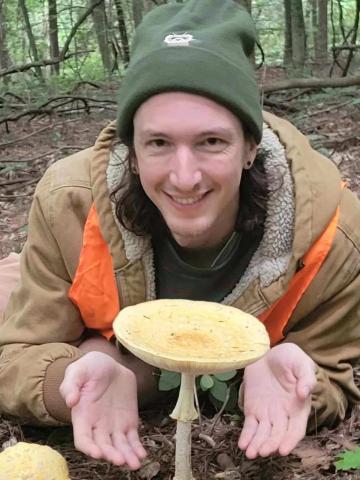Biology Seminar Series: Sensory & Motor Pathway Evolution with Dr. Andrew Swafford
–
McCardell Bicentennial Hall 220276 Bicentennial Way
Middlebury, VT 05753 View in Campus Map
Open to the Public

Evolution, Integration, and the Rise of Behavior: The Consequences and Shared History of Sensory Systems in Animals & Fungi
What do you and fungi have in common? My research focuses on an understudied group of fungi, chytrids, to investigate how sensory systems shape the way organisms perceive and adapt to their environments. In this seminar we will explore how molecular and evolutionary tools can help us uncover the surprising similarity of eyes in fungi and animals and, more broadly, the role of sensory systems in the global spread of the fungal frog-killing pathogen, Batrachochytrium dendrobatidis.
To study how eyes evolve, I dissect both animals and fungal visual systems into discrete evolutionary units, revealing a common blueprint for eye evolution. Leveraging the well described proteins and pathways of animal eyes, I identify that stress response networks lie at the foundation of animal eye evolution. This integrative work serves as a starting point for future investigations into fungus eye evolution, and how sensory systems influence organismal biology to give rise to behavior. I apply this framework to understand factors driving virulence in the chytrid pathogen decimating frog populations worldwide, B. dendrobatidis (Bd). Using quantitative microscopy techniques, I find that Bd is highly sensitive to host-specific cues and has evolved a linked sensory-motor circuit in its infectious stage. This allows Bd to seek out and infect frogs in aquatic ecosystems, underscoring the importance of understanding sensory system evolution as we study chytrid pathogens and mitigate their impacts. Lastly, I provide a sneak peek into the future of sensory evolution research using chytrid fungi as a new model system. The tools I have built throughout my career allow us to delve into the shared evolutionary processes between animals and fungi that guide sensory evolution and provide insights into conservation challenges posed by this unique group of fungi.
- Sponsored by:
- Biology
Contact Organizer
Thompson, Missey
mathomps@middlebury.edu
443-5258

